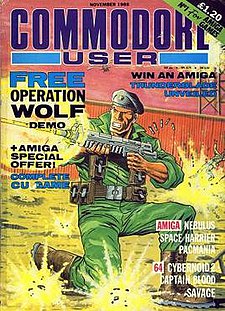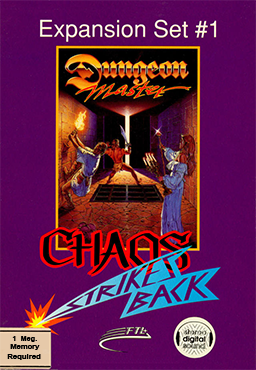
Chaos Strikes Back is an expansion and sequel to Dungeon Master, the earlier 3D role-playing video game. Chaos Strikes Back was released in 1989 and is also available on several platforms. It uses the same engine as Dungeon Master, with new graphics and a new, far more challenging, dungeon.

Rob Hubbard is a British composer best known for his musical and programming work for microcomputers of the 1980s, such as the Commodore 64.

Paradroid is a Commodore 64 computer game written by Andrew Braybrook and published by Hewson Consultants in 1985. It is a shoot 'em up with puzzle elements and was critically praised at release. The objective is to clear a fleet of spaceships of hostile robots by destroying them or taking them over via a mini-game. It was later remade as Paradroid 90 for the Commodore Amiga and Atari ST home computers and as Paradroid 2000 for the Acorn Archimedes. There exist several fan-made remakes for modern PCs. In 2004 the Commodore 64 version was re-released as a built-in game on the C64 Direct-to-TV, and in 2008 for the Wii Virtual Console in Europe.
Newsfield Publications Ltd was a British magazine publisher during the 1980s and early 1990s.

Zzap!64 was a computer games magazine covering games on the Commodore International series of computers, especially the Commodore 64 (C64). It was published in the UK by Newsfield Publications Ltd and later by Europress Impact.

The One was a video game magazine in the United Kingdom which covered 16-bit home gaming during the late 1980s and early 1990s. It was first published by EMAP in October 1988 and initially covered computer games aimed at the Atari ST, Amiga, and IBM PC compatible markets.
Artworx was a Naples, Florida software company that produced and supported a line of computer games from 1981 to 2020. It is named after the founder's given name. At first the company published a variety of games, including titles in adventure and arcade-action genres, but were later best known for a strip poker series.

Double Dragon is a 1987 beat 'em up video game developed by Technōs Japan and distributed by Taito for arcades across Asia, North America and Europe. It is the first title in the Double Dragon franchise. The game's development was led by Yoshihisa Kishimoto, and it is a spiritual and technological successor to Technos' earlier beat 'em up, Nekketsu Kōha Kunio-kun (1986), released outside of Japan by Taito as Renegade; Kishimoto originally envisioned it as a direct sequel and part of the Kunio-kun series, before making it a new game with a different cast and setting.

Time Bandit is a maze shoot 'em up written for the TRS-80 Model I by Bill Dunlevy and Harry Lafnear and published by MichTron in 1983. It was ported to the TRS-80 Color Computer and Dragon 32, but enjoyed its greatest popularity several years later as an early release for the Atari ST. It was also released for the pseudo-PC-compatible Sanyo MBC-55x with 8-color display. Amiga and MS-DOS versions were ported by Timothy Purves.

Centurion: Defender of Rome is a turn-based strategy video game with real-time battle sequences, designed by Kellyn Beck and Bits of Magic and published by Electronic Arts. Originally released for MS-DOS in 1990, the game was later ported to the Amiga and the Sega Genesis in 1991. Centurion shares much of the concept and feel with Beck's earlier game Defender of the Crown (1987).

Predator is a 1987 side-scrolling action game based on the 1987 film Predator, and the first game based on the franchise.
Alligata Software Ltd. was a computer games developer and publisher based in Sheffield in the UK in the 1980s.

Elvira II: The Jaws of Cerberus is the second game in the Elvira series of horror adventure/role-playing video games. It was developed by Horror Soft and published by Accolade in 1992. The game is a sequel to 1990's Elvira: Mistress of the Dark. It was followed by Waxworks, which can be considered its spiritual sequel.
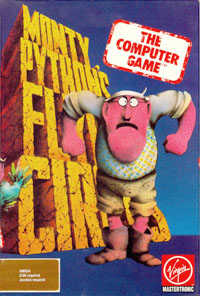
Monty Python's Flying Circus: The Computer Game is a 1990 scrolling shoot 'em up video game developed by Core Design. It was released by Virgin Games the Amiga, Commodore 64, Amstrad CPC, and the ZX Spectrum. It is loosely based on material and characters from the 1970s British comedy series Monty Python's Flying Circus, in particular the Gumby character.

Wicked is a real-time strategy horror-themed video game released for the Amiga, Atari ST, and Commodore 64 in 1989 by Binary Vision and Electric Dreams Software. Activision had intended to release the game for MS-DOS with EGA graphics in 1989, but the port was cancelled.
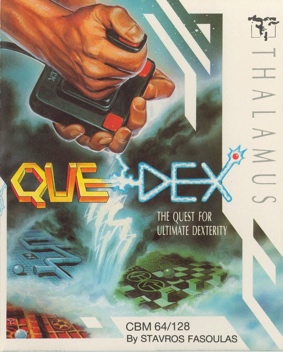
Quedex is a game released for the Commodore 64 in 1987 by Thalamus. It is the third game developed by Finnish game programmer Stavros Fasoulas. The game consists of ten planes where the player steers a silvery ball and must find an exit square in order to leave the maze-like play-area. The name Quedex derives from the subtitle "The Quest for Ultimate Dexterity". In 1988, Epyx released ports of Quedex for the Amiga and MS-DOS under the name Mindroll.

Mickey Mouse: The Computer Game, also known as just Mickey Mouse, is an action game developed and published by Gremlin Graphics in 1988 for the Amiga, Amstrad CPC, Atari ST, Commodore 64, and ZX Spectrum.

A.M.C.: Astro Marine Corps is a 1989 platform shooter video game developed by Creepsoft and published by Dinamic Software. It was released for the Amiga, Atari ST, Commodore 64, ZX Spectrum, MSX, and Amstrad CPC. The program as written by Pablo Ariza with music by José A. Martín.
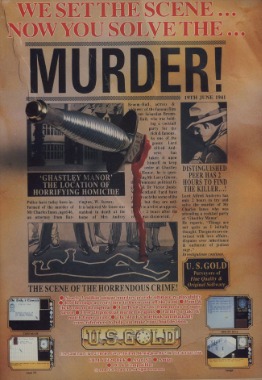
Murder! is a 1990 video game published by U.S. Gold.
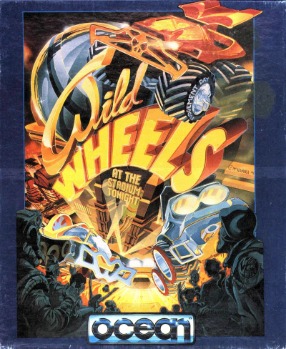
Wild Wheels is a 1991 video game published by Ocean Software.
